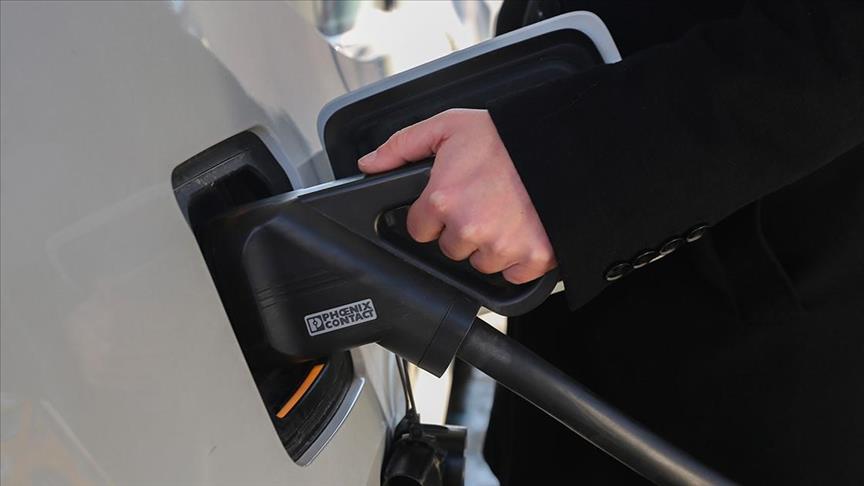The transition towards nickel-free electric vehicle (EV) batteries could reduce the impact of record-breaking nickel prices and encourage the global uptake of EVs, experts said on Friday.
As a core ingredient in battery technologies for electric vehicles, the surge in nickel prices in the past months, and especially after the Russia-Ukraine war, have spurred supply risks.
The cost of nickel, a key component in lithium-ion battery cells used in EVs, soared when Russia, the world's third-largest nickel producer, engaged in a military operation in eastern Ukraine on Feb. 24.
The three-month nickel contract in the LME jumped above $100,000 a metric ton on March 8, more than doubling its last closing price of $48,078 on March 7.
Nickel is used widely in EVs but also in a lot of specialty alloys that are needed for power plant installations and oil and gas exploration, which makes it also a key component for not only the energy transition but also for the global energy sector.
'The nickel prices will most definitely impact the energy industry as it is one feedstock for steel which is used in the power, heating and transportation sector,' Rystad Energy's Energy Transition Analyst, Alexandra Gerken, said in an exclusive interview.
Nickel is also used in most batteries currently, more specifically in nickel-manganese-cobalt (NMC) and lithium nickel cobalt aluminum oxide (NCA) batteries, thus driving up the price of battery packs and thus electric vehicles in general, Gerken added.
However, on the battery side, Gerken noted that the impact is expected to be felt in the short to medium term, given the alternatives that original equipment manufacturers (OEMs) can switch to.
'Looking at batteries we already now see a shift towards nickel and cobalt-free batteries called lithium-iron-phosphate (LFP). They are significantly cheaper than NMC or NCA batteries. They currently still have a lower energy density than nickel-based batteries but are starting to catch up in this regard,' she said.
With many OEMs already announcing a switch to LFP for lower-range models, they might be pushed to use LFP in most of their vehicles if nickel prices continue to stay high.
'If the switch to LFP is fast enough then we won’t see a slowing down of this sector due to nickel prices,' she added.
She exemplified such market adoptions when cobalt prices rose in previous years and the industry managed to develop new technologies that substitute cobalt with nickel while being able to increase energy density.
'Since nickel is used in many sectors we will more likely see nickel price increases. That said, the current nickel prices are not likely to prevail as it seems to drive just as much by current market sentiment as by market fundamentals,' she said.
Regardless, she stressed that the costs for EVs will continue to diminish, making them and energy storage more affordable.
“But the whole transition might have been postponed by a year or two as a consequence. Marginal in the bigger picture, but still significant given the urgency of building the foundation within this decade to limit global warming to 1.5C over the next 2-3 decades,' she added.
- Demand from EV sector will be 1.67 million tonnes in 2028
Rystad Energy's Energy Metals Analyst Susan Zou also concurred that nickel prices are still supported by market fundamentals.
According to Zou, the sanctions on Russia will temporarily freeze the liquidity of nickel products from Russia, which in 2021 accounted for about 13% of the global nickel mining capacity, and 12% of global nickel output.
'Such trading disruptions of Russian nickel are not estimated to be solved or eased in the near future,' she said.
Before sanctions on Russia, the LME nickel stocks had been on a quick downturn trajectory to slightly above 70,000 tonnes last week from over 250,000 tonnes during the same period last year.
Nickel is required by both stainless steel and battery supply chains, which so far account for about 90% and 10% respectively of nickel demand.
Nickel metal demand from the stainless-steel industry is expected to grow at a rate of about 5% per year, while the battery demand growth rate is even bigger, Zou said.
In a less aggressive scenario, Zou said that nickel demand from the EV and energy storage system (ESS) sector will be around 1.67 million tonnes metal weight in 2028 when the global nickel mining capacity is estimated to just hit above 3 million tonnes metal weight.
- 'Impact will be short-lived'
Sean Mulshaw, the research director of Nickel Markets at Wood Mackenzie, also said nickel, which is used in a lot of specialty alloys that are needed for power plant installations and oil and gas exploration, is also important for the energy transition because it is a key component in rechargeable batteries for electric vehicles and energy storage
'As this technology has developed, the costs have come down but clearly, more expensive nickel will mean higher costs,' he noted.
Before the unprecedented surge in nickel costs earlier this month, Mulshaw said they forecast that nickel prices will continue to rise in the short term before retreating in the second half of 2022.
'This was based on the expectation that the strong post-lockdown rebound in demand would unwind and with more new nickel production starting up in Indonesia. So weaker demand and greater supply. It is too soon to say quite how prices will settle after the LME surge but we currently assume the impact will be short-lived,' he concluded.
By Ebru Sengul Cevrioglu
Anadolu Agency
energy@aa.com.tr


